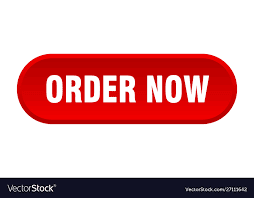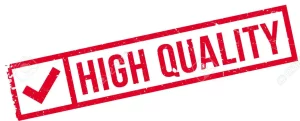- Premium Academic Help From Professionals
- +1 757 528 8682
- support@standardwriter.com
(SWOT) analysis of an organization of your choice
(SWOT) analysis of an organization of your choice
|
Order Number |
636738393092 |
|
Type of Project |
ESSAY |
|
Writer Level |
PHD VERIFIED |
|
Format |
APA |
|
Academic Sources |
10 |
|
Page Count |
3-12 PAGES |
Instructions/Descriptions
(SWOT) analysis of an organization of your choice
- Type of paper:Coursework
- Discipline:Business and Management : Business
- Format or citation style:APA (edition “APA 6”)
- Paper instructions:
-
Complete a strengths, weaknesses, opportunities, and threats (SWOT) analysis of an organization of your choice.
A SWOT analysis is vital to generating long-term strategies.
SHOW LESS
By successfully completing this assessment, you will demonstrate your proficiency in the following course competencies and assessment criteria:Competency 3: Apply a sequential process for developing and implementing strategies, goals, objectives, and tactics as part of the strategic plan implementation.
Describe internal strengths of the selected organization.
Describe internal weaknesses of the selected organization.
Describe external opportunities of the selected organization.
Describe external threats of the selected organization.
Competency Map
CHECK YOUR PROGRESS
Use this online tool to track your performance and progress through your course.
Toggle Drawer
Context
Strategic management is the formulation, implementation, and evaluation of decisions that help a business achieve its goals (David, 2014). Strategy formulation includes the development of a vision and a mission, determining internal strengths and weaknesses, identifying external opportunities and threats (also known as a SWOT analysis), and establishing long-term strategies and objectives. Strategy implementation requires the organization to create policies and short-term objectives, and to allocate resources so strategies can be achieved. Strategy evaluation reviews external and internal factors, measures performance, and takes corrective action. Strategy formulation can occur at the corporate, divisional, business unit, or functional level. There are financial and non-financial benefits in strategic planning. Success increasingly depends upon being competitive in the global market. Strategic planning can help achieve this imperative.SHOW MORE
Toggle Drawer
Questions to Consider
To deepen your understanding, you are encouraged to consider the questions below and discuss them with a fellow learner, a work associate, an interested friend, or a member of the business community.Read the mission statement of an organization with which you are either currently employed or very familiar, and analyze the following questions:
Does this mission statement successfully reflect the organization’s goals?
What are the strengths and weaknesses of this mission statement?
Toggle Drawer
Resources
Suggested Resources
The following optional resources are provided to support you in completing the assessment or to provide a helpful context. For additional resources, refer to the Research Resources and Supplemental Resources in the left navigation menu of your courseroom.Library Resources
The following e-books or articles from the Capella University Library are linked directly in this course:Morden, T. (2007). Principles of strategic management. Abingdon, Oxon, GBR: Ashgate Publishing Group.
Tedlow, R. S. (2005, December). Becoming Andy Grove: A Harvard historian explains how Intel’s legendary chief became the best model we have for leading a business in the 21st century. Fortune, 152(12), 116–138.
SHOW MORE
Assessment Instructions
Preparation
Choose an organization on which to complete a strengths, weaknesses, opportunities, and threats (SWOT) analysis. Ideally, the company you choose will be a familiar one and one to which you have easy access, such as your place of employment or a company close to where you live. You may use the same organization for other assessments in this course. Think of yourself as an outside consultant hired to research, assess, formulate, recommend, and evaluate your selected organization.It is important to remember that opportunities and threats are external to an organization, and strengths and weaknesses are internal to an organization.
SWOT Analysis
Complete the following:First, identify and describe what you consider to be your chosen organization’s internal strengths and weaknesses. Examples of internal factors include employees, management, and finance. Use the terms “Strengths” and “Weaknesses” as titles. Then, list three or more factors under each title and describe them.
Second, identify and describe what you consider to be the organization’s external opportunities and threats. Opportunities and threats may include a variety of factors, such as economics, technology, demographics, environmental considerations, culture, competition, and political influences. Use the terms “Opportunities” and “Threats” as titles. Then, list three or more factors under each title and describe them.
Be sure to both identify and describe the strengths, weaknesses, opportunities, and threats of your chosen organization.Additional Requirements
Written communication: Written communication is free of errors that detract from the overall message.
APA formatting: If you use sources, ensure that resources and citations are formatted according to APA (6th edition) style and formatting.
Font and font size: Times New Roman, 12 point.
(SWOT) analysis of an organization of your choice
| RUBRIC | |||
| Excellent Quality
95-100%
|
Introduction
45-41 points The context and relevance of the issue, as well as a clear description of the study aim, are presented. The history of searches is discussed. |
Literature Support
91-84 points The context and relevance of the issue, as well as a clear description of the study aim, are presented. The history of searches is discussed. |
Methodology
58-53 points With titles for each slide as well as bulleted sections to group relevant information as required, the content is well-organized. Excellent use of typeface, color, images, effects, and so on to improve readability and presenting content. The minimum length criterion of 10 slides/pages is reached. |
| Average Score
50-85% |
40-38 points
More depth/information is required for the context and importance, otherwise the study detail will be unclear. There is no search history information supplied. |
83-76 points
There is a review of important theoretical literature, however there is limited integration of research into problem-related ideas. The review is just partly focused and arranged. There is research that both supports and opposes. A summary of the material given is provided. The conclusion may or may not include a biblical integration. |
52-49 points
The content is somewhat ordered, but there is no discernible organization. The use of typeface, color, graphics, effects, and so on may sometimes distract from the presenting substance. It is possible that the length criteria will not be reached. |
| Poor Quality
0-45% |
37-1 points
The context and/or importance are lacking. There is no search history information supplied. |
75-1 points
There has been an examination of relevant theoretical literature, but still no research concerning problem-related concepts has been synthesized. The review is just somewhat focused and organized. The provided overview of content does not include any supporting or opposing research. The conclusion has no scriptural references. |
48-1 points
There is no logical or apparent organizational structure. There is no discernible logical sequence. The use of typeface, color, graphics, effects, and so on often detracts from the presenting substance. It is possible that the length criteria will not be reached. |
(SWOT) analysis of an organization of your choice
 |
 |
 |
 |
 |
 |
(SWOT) analysis of an organization of your choice
Place the Order Here: https://standardwriter.com/orders/ordernow / https://standardwriter.com/



